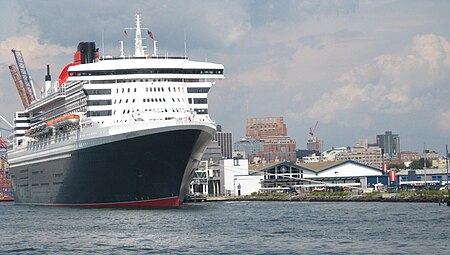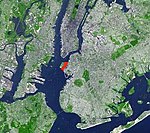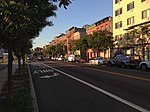Brooklyn Cruise Terminal

The Brooklyn Cruise Terminal is a cruise terminal in the Red Hook neighborhood of Brooklyn, New York City. The terminal is 180,000 square feet (17,000 m2) and sits on Buttermilk Channel, a tidal strait separating Brooklyn from Governors Island. It is located on land owned by the Port Authority of New York and New Jersey (PANYNJ) and leased by the New York City Economic Development Corporation (NYCEDC). The terminal is one of three terminals for ocean-going cruise ships in the New York metropolitan area. Ships from Carnival Corporation (which owns the Cunard and Princess Cruises) call the terminal their home port. The Brooklyn Cruise Terminal is located at Red Hook Pier 12, on the south side of the Atlantic Basin at Pioneer and Imlay Streets. Vehicular access is through the main gate near the intersection of Bowne and Imlay Streets. The terminal was converted from a 1954 freight terminal and was earlier the site of the Atlantic Basin Iron Works. The Brooklyn Cruise Terminal opened on April 15, 2006, following a $52 million investment by NYCEDC, with the arrival of the RMS Queen Mary 2. On July 15 and 16, 2017, the Brooklyn Street Circuit in the port and supporting roads hosted the Formula E electric car racing series's ninth and tenth round in the 2016–17 Formula E season.
Excerpt from the Wikipedia article Brooklyn Cruise Terminal (License: CC BY-SA 3.0, Authors, Images).Brooklyn Cruise Terminal
Clinton Wharf, New York Brooklyn
Geographical coordinates (GPS) Address Nearby Places Show on map
Geographical coordinates (GPS)
| Latitude | Longitude |
|---|---|
| N 40.682 ° | E -74.014333333333 ° |
Address
Brooklyn Cruise Terminal
Clinton Wharf
11231 New York, Brooklyn
New York, United States
Open on Google Maps










